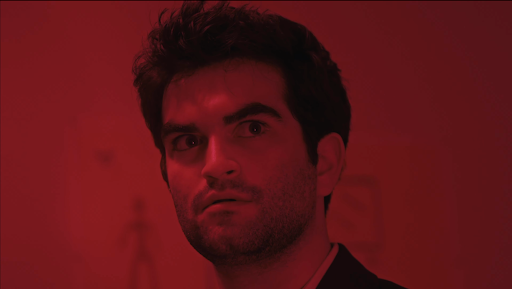
It’s not often an audience of all ages can laugh uproariously at the misadventures of a chameleon donning a Hawaiian shirt. Then again, it’s not often Johnny Depp (“The Tourist”) is providing the voice of said lizard.
Acquaint yourself with Rango: A much less phlegmatic Clint Eastwood reincarnated as an animated chameleon who channels a Barney Fife-like clumsiness whenever confronting the villains of the West – frivolous hilarity courtesy of Depp is no doubt expected.
“Rango” tells the story of a swift-talking, sharp-witted chameleon who, while facing a moment of vulnerable existentialism, finds himself suddenly catapulted (literally) from the safe haven of his terrarium into the harsh, water-deprived Mojave Desert after the station wagon he’s traveling in hits an armadillo.
In search of water, Rango finds himself an out-of-place stranger in Dirt, a town desperately in need of water and a hero. Using his penchant for theatrics and his thespian desire for a captivated audience, Rango unintentionally secures himself the position of town sheriff – a post none of his predecessors have survived. With this, the film launches viewers into the hilarious, if at times odd, calamities of an unconventional hero of the West.
From the beginning scenes when we see Rango using his glass terrarium as a makeshift theater (with a limbless doll body, a dead bug and a palm tree as his co-stars) we immediately understand this chameleon’s misdirected theatrical aspirations coupled with his lack of a real audience. This established theme pervades throughout the rest of the film as Rango’s intense craving for spectators and his willingness to wholeheartedly embrace the role of sheriff nearly ruin Dirt.
Though animated features often teeter cautiously between exaggerated absurdity and sentimental dramatics, it seems only the animation gurus at Pixar have been able to dominate the genre with their recipe of superior animation and wholesome messages. That’s why it came as somewhat of a surprise when Paramount partnered with Nickelodeon for “Rango” to provide the same level of animation artistry and quirky sentimentality previously only Pixar could boast of.
This isn’t to say “Rango” is in any way a replication of its genre companions, though. “Rango” strays from the high standard set by Pixar and instead provides viewers with a clever script salted with just enough sardonic bite to render it nearly impossible not to gain a new appreciation for animation’s place in cinema.
Thanks in large part to director Gore Verbinski’s (“Pirates of the Caribbean: At World’s End”) use of unorthodox techniques to bring the gritty world of Dirt to life (he required his voice cast to act out scenes together so animators could see their natural interaction with each other outside of the recording studio), “Rango” could easily be dubbed as revolutionary within the genre, or at least be mentioned in the same breath as any Pixar flick.
Through the film’s complex animation (provided by Industrial Light & Magic – the special effects masterminds behind the “Star Wars” franchise) and acute attention to detail, “Rango” is arguably a major artistic achievement for Paramount. Every detail, from the scales on Dirt’s reptiles to the dimensional eyes of each character, proves the CGI technique in this film is extraordinary. Even the depictions of the unforgiving Mojave Desert landscape are executed with such detail that it’s difficult to stave off thirstiness. Getting back to basics, Verbinski and his crew abandoned the goofy 3-D glasses and distracting hijinks and let the animation speak for itself.
Apart from the impressive artistry, it’s the eccentricity of Depp and his co-stars that really elevate the film from simply being a children’s romp in the desert to a movie for all ages.
Take Beans, for example, a spitfire desert iguana played by Isla Fisher (“Burke and Hare”). Aside from the impressive fact that Fisher not only had to mask her Australian accent, but also coat it with a Western twang, her deadpan delivery work in perfect concert with the idiosyncrasies of Rango.
Joined by acting heavyweights like Harry Dean Stanton, Bill Nighy, Ned Beatty and Abigail Breslin, the rough n’ tough atmosphere of the West, no doubt weaved together from the classic spaghetti westerns of the past, gets a modern revamping.
Despite the striking animation and strong cast, the film isn’t without its missteps. Because “Rango” is a Western, it often boldly toes the line between acceptable kiddie-approved antics and quips for the adults. There’s a veritable buffet of gun showdowns, foul play, the occasional puff of a cigar and a prostate joke – not exactly the same saccharine spirit as “Toy Story.”
But with Depp’s patented quirk, a running stream of deadpan farce and the much-appreciated absence of 3-D, “Rango” could potentially seat itself as a 2011 fan favorite.
4 out of 5 stars



















